Leaf Shape: Margins, Venation and Position

In last week’s blog I discussed simple vs compound leaves and basic leaf shape. This week I tackle margins, different venation patterns, and key ways that leaves are attached to the stem. The terms discussed are in bold text. The examples are all illustrations I’ve done over the years. If you find any mistakes feel free to tell me; I’m not a botanist, just a keen and interested amateur..
What is a margin?
A margin refers to the edge of the leaf.
Entire margins
A smooth edge is called an entire margin. There are no teeth or notches taken from the edge, it’s smooth and complete. An example is the beech.
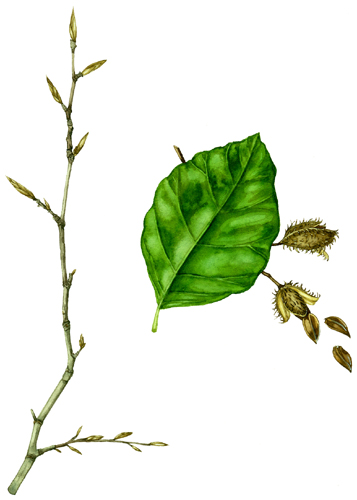
Lobed leaf margins
There are lobed margins, where the blade of the leaf is divided into protrusions. These can be spiky or rounded (so think of a dandelion and an oak leaf).
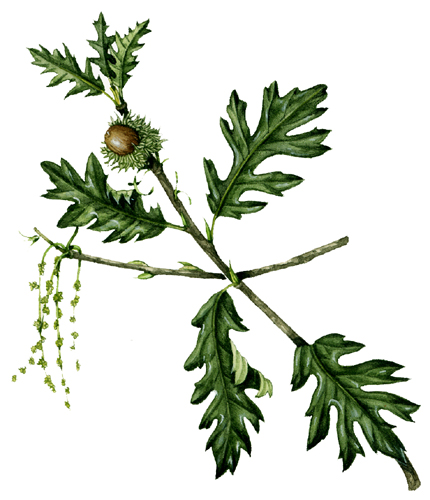
These protrusions either come from the midrib (as with the dandelion and oak) and are described as pinnately lobed; or they spread like fingers from a hand (think of a maple or ivy leaf); then the term is palmately lobed.
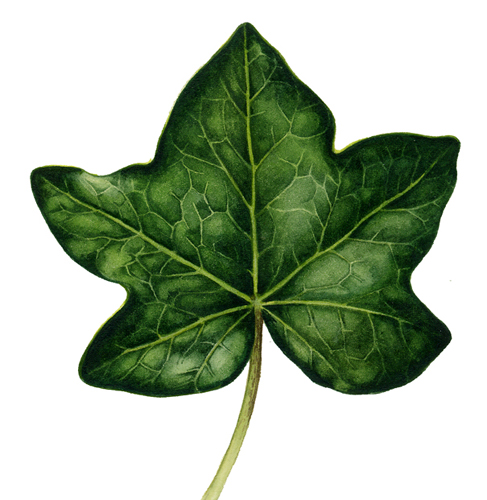
Toothed leaf margins: 3 types
Another margin type is toothed. This covers three terms; serrate, dentate, and crenate. Serrate margins are leaf margins where the teeth are like those of a saw, continuous and forward pointing (like the sweet chestnut).
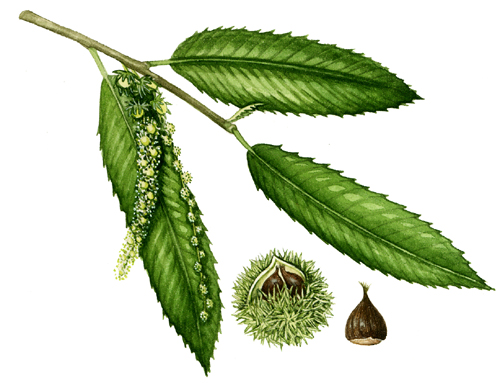
Dentate margins have continuous teeth which point outwards (like the strawberry).
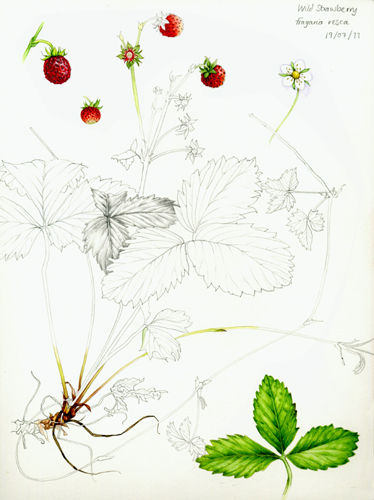
Crenate margins are pretty much the same as dentate ones, but the teeth tend to be rounded. This is the case with this Golden opposite leaved saxifrage.
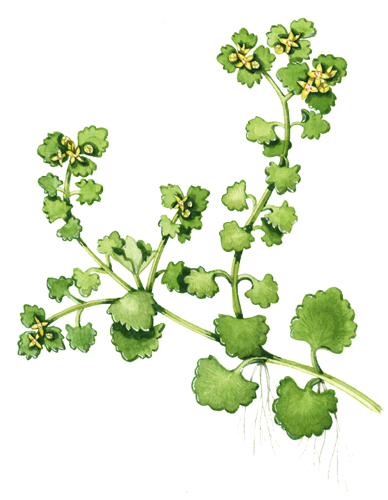
More on leaf margins…
This has covered some basic aspects of leaf margins. For more please follow the link to the University of Rochester’s informative illustrated article.
Below is an illustration done for Rodale’s 21st Century Herbal by Michael Balick. So this shows many of these margins on one page.

Venation Patterns on leaves
Venation patterns are the layout the network of veins form. When you’re drawing a leaf you need to notice this, both in terms of getting the leaf looking correct, and also because it helps when plotting in shadows and lights.
The three types of venation: 1. Palmate Netted
There are three main types of venation. The first is netted venation, where the leaf veins form a lace-like skeleton of veins. This can be palmate netted venation, where the veins spread form one central point like fingers from a hand (think of a nasturtium or geranium).
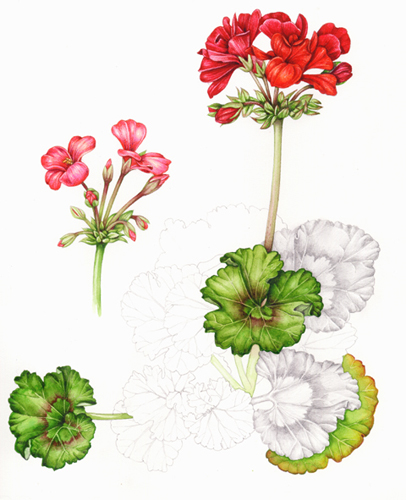
Three types of venation: 2. Pinnate netted venation
Leaves often show pinnate netted venation; the more familiar pattern that you might see in a holly, or beech leaf skeleton; and you can see it in this honeysuckle study.
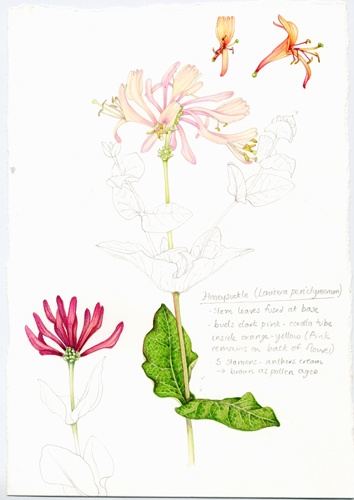
Three types of venation: 3. Parallel venation
The other layout of veins has them running parallel to each other. Members of the lily and onion (Allium) family show this, so do grasses. Here, parallel venation is illustrated with the autumn crocus.
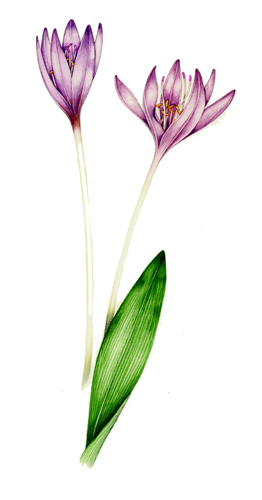
Phyllotaxy: How a leaf is attached to the stem
There’s a term to describe the way the leaves of a plant are attached to the stem: phyllotaxy, which directly translates from the latin as “leaf order”. This is a wild and wonderful subject, and maths figures heavily. The reason for the variation in leaf layout is both environmental and innate in the plant; so generally the purpose is to maximise the amount of sunlight hitting the leaf surfaces of a plant (and thus maximising space available for photosynthesis).
Phyllotaxy: Opposite leaf arrangement
Leaves can be arranged opposite one another at a node, in pairs. This is, conveniently, called opposite. Mint plants and maples show this pattern, like many of the plants in this plate I did for HarperCollins flower guide.
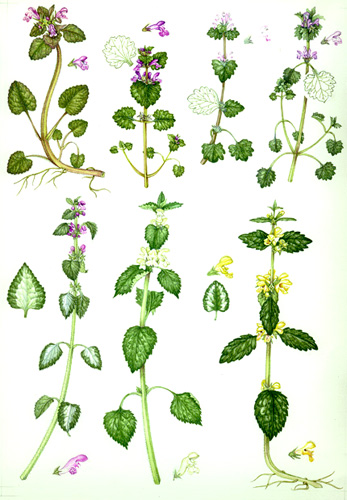
Phyllotaxy: Whorl leaf attachment
Leaves can also be arranged in a whorl, when more than two leaves appear at one node. Bedstraws, like this ladies’ bedstraw show this pattern of phyllotaxy.
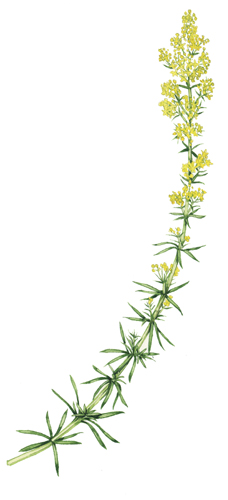
Phyllotaxy: Spiral leaf attachment
The most interesting arrangement, perhaps, is the spiral. This relates to the Fibonacci sequence and the golden ratio. It can be seen in many aspects of nature (and not just in the plant kingdom). However, I’m no mathematician, so the above link below will be better at explaining this than I could ever hope to be.
Spiral phyllotaxy means that the leaves (or pairs of leaves) are stepped around a stem, much like the steps of a spiral staircase. This is always easier to see if you look directly down on a plant from above. You’ll also note how infrequently leaves overlap or block each others’ access to the light.
The simplest form of spiral phyllotaxy has every third leaf aligned with one below it. Grasses do this, as does the elm tree.
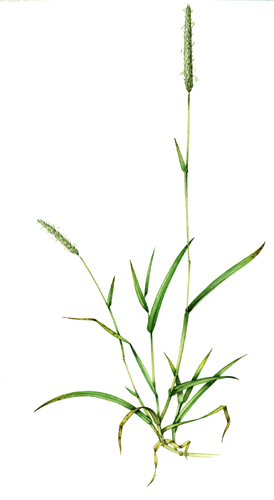
Another version has every fourth leaf aligned; but the commonest is probably the arrangement where every sixth one is in line with one (far) below it. Oaks, cherries, apples, pears, and poplars show this. I believe it also occurs in the damson, but it’s hard to tell from a side view.
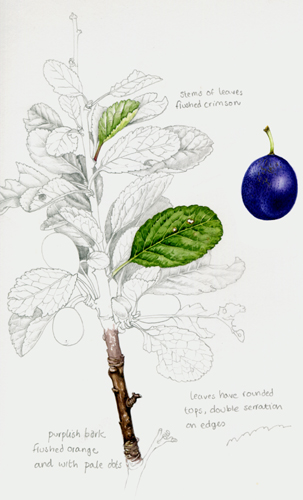
In conclusion….
I think that’s plenty of botany for now (and my head’s spinning). I do think that bearing these matters in mind is important when drawing a botanical subject.
Many thanks to Botany: A Textbook for Colleges by Hill, Popp & Grove from which much of this material is taken.
You may not need the terminology down perfect, but you do need to think about the following: 1. leaf arrangement on a stem. 2. margin form 3. venation. It will improve your illustrations because (inevitably) it increases your understanding of a plant, and that’s what it’s all about.
For regular updates on what I’m working on, and how it is to be a natural history illustrator, do follow me on Instagram, facebook, pinterest, or twitter (whichever you like most!) Hope to see you there soon.


I need some diagrams with it’s parts given function
Hi Laat. Hmm. I do have a labelled diagram of a cross section of a leaf, I think, somewhere. What do you need the picture for? If it’s for personal use or if youre a student, then drop me and email and I’ll send it over to you to use free of charge. If you want to reproduce it, that’s fine too but there’d bhe a cost. Either way, email me on info@lizzieharper.co.uk and mention that youre oafter the labelled leaf cross section diagram. I can’t attach images in reply to comments, unfortunately, or I’d attach it here.
yours
Lizzie
So Nice of you. I will keep in touch with you.
thank you for the article
Thank you for leaving a comment, and for your thanks
Wow, I find leaf morphology fascinating! 🌿 The intricate details of leaf shape, such as margins, venation, and position, hold so much information about a plant’s biology and adaptation. It’s incredible to see how different species have evolved unique leaf characteristics to thrive in their respective environments. I would love to learn more about specific examples and their ecological significance. Thanks for sharing this intriguing post!
Hi Allison
Thats a great idea for a future blog, the “why” of leaf morphology. Theres a bit of that in my blogs on salt-tolerant plants, but there’s certainly room for more on why leaves are the shapes they are. Intersting idea….
Can you discuss any specific plant species where leaf shape, margins, venation, and position are particularly unique or interesting?
Awesome content. I do love reading contents like this. Wow.
I will not hesitate to come back and read more.
I am so happy after going through such an informative content.
Thanks for sharing such a great information. How long have you been writing? Keep it up.
Hi Cresto
ive been illustrating for about 30 years now. Thanks for your interest!
can we learn about the good position of leaf?
Well, the best way to figure out where to place a leaf in an illustration is to look very carefully at the plant, and take that as your guide.
I am really enjoying the theme/design of your web site. Do you ever run into any browser compatibility issues?
A number of my blog audience have complained about my
website not operating correctly in Explorer but looks great in Opera.
Do you have any ideas to help fix this issue?
Hiya
no, Im afraid thats not feedback I’ve encountered, Im sorry. Wish I could help!
A clear and informative continuation of the botany series! The explanation of leaf margins, starting with “entire,” is very helpful, and the use of personal illustrations adds a great touch.
Thankyou!
thanks for your sharing about leaves,I’ve leant a lot,so many different shapes and margins.
SO glad youre interested!
Detox in Atlanta, GA offers individuals a safe and structured environment to begin their recovery journey. Licensed professionals guide clients through withdrawal, manage symptoms, and provide emotional support throughout the process. Detox programs in Atlanta focus on safety, comfort, and creating a strong foundation for continued mental health or addiction treatment.